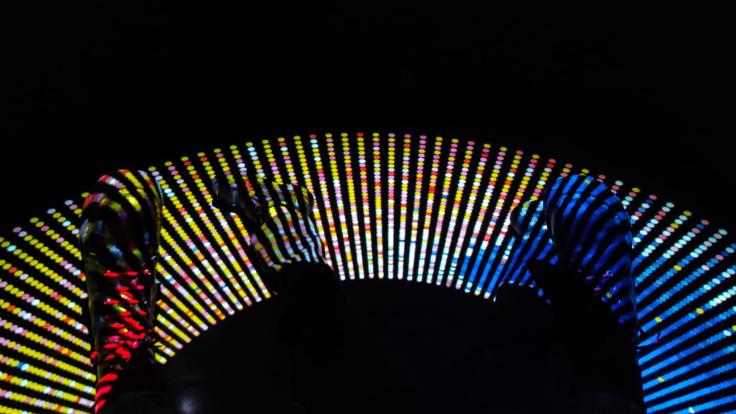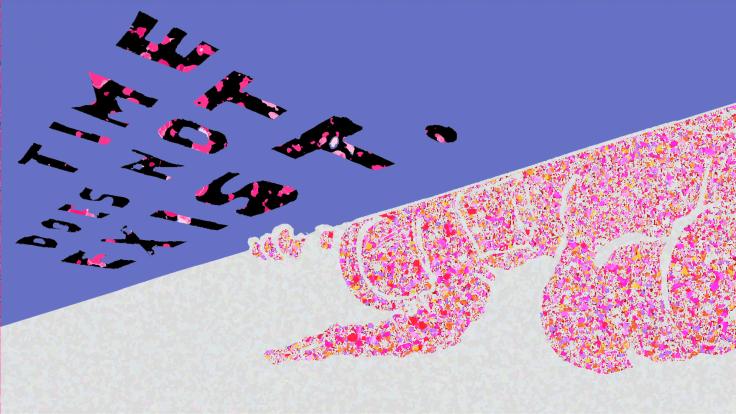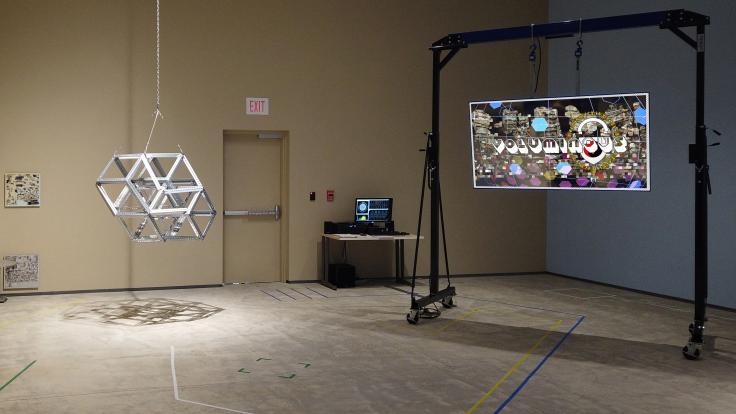In December 1960, The New Yorker published John Updike’s poem about the neutrino, a ghost-like particle discovered a few years before. Titled “Cosmic Gall,” Updike’s poem examines the neutrino’s bizarre properties.
Little did he know how weird things would get: Scientists not only found two more types of neutrinos, but also discovered that the three types transform into each other. Here is a brief summary of what we know about the neutrino 40 years later.
Cosmic Gall
by John Updike
- Neutrinos, they are very small.
- They have no charge and have no mass
- And do not interact at all.
- The earth is just a silly ball
- To them, through which they simply pass,
- Like dustmaids down a drafty hall
- Or photons through a sheet of glass.
- They snub the most exquisite gas,
- Ignore the most substantial wall,
- Cold-shoulder steel and sounding brass,
- Insult the stallion in his stall,
- And, scorning barriers of class,
- Infiltrate you and me! Like tall
- And painless guillotines, they fall
- Down through our heads into the grass.
- At night, they enter at Nepal
- And pierce the lover and his lass
- From underneath the bed - you call
- It wonderful; I call it crass.
Very small
Line 1
How small is small? The neutrino—one of the fundamental building blocks of matter—may have zero diameter. Why? The mathematical framework that describes the interactions of neutrinos, electrons, and other fundamental particles, known as quantum field theory, requires that fundamental particles be “point-like,” with no spatial extension. Experiments that try to find evidence for a non-zero diameter of fundamental particles such as quarks and neutrinos have failed so far. In contrast, composite particles are not point-like. Protons, for example, are about 10-15 meters in diameter.
No charge
Line 2
Neutrinos are the only fundamental building blocks of matter that have no electrical charge. The word “neutrino,” invented by Italian physicist Enrico Fermi, means “little neutral one.”
Do not interact at all
Line 3
Neutrinos hardly interact with other particles of matter. Saying that they do not interact at all is an overstatement. But poets are allowed to bend the truth a little, aren’t they?
Through which they simply pass
Line 5
Neutrinos zip through matter like bullets through empty space. To them the Earth basically doesn’t exist. Neutrinos from the sun enter Earth on one side and leave it on the opposite side about four hundredths of a second later, traveling along a straight line close to the speed of light. Fewer than one in a billion solar neutrinos traversing the Earth will interact with an electron or an atomic nucleus.
The most substantial wall
Line 9
To have a 50 percent chance of stopping a neutrino, scientists would need to build a wall of lead that is more than a light-year—or 9.5 trillion kilometers—thick.
Infiltrate you and me
Line 13
Stretch out your hand and count to three: a trillion neutrinos just streamed through your hand, yet you didn’t feel a thing. The chance that a neutrino will interact with a single atom in your body during your lifetime is one in four.
Fall
Line 14
Neutrinos come from fusion processes, such as the reactions that power our sun, and radioactivity, such as the natural decay of potassium inside a banana. Once they spring into existence, they travel close to the speed of light. Even though neutrinos have a tiny mass, Earth’s gravity won’t make them fall down.
At night
Line 16
The sun emits about as many neutrino particles as particles of light, which are known as photons. At night, Earth prevents the light from reaching us, but neutrinos continue to stream right through the globe and through our bodies.











